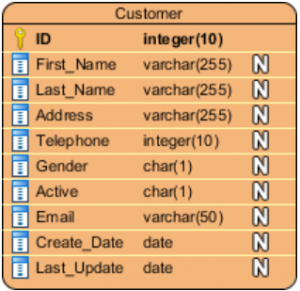An Entity Relationship Diagram (ERD) is a type of structural diagram used in database design. An ERD contains entities, attributes, and relationships. The definition of an ERD entity is a definable thing or concept within a system.
This entity can be a person (teacher), object (invoice), concept (profile, or event (transaction). In ER models an entity is shown as a rounded rectangle with the title at top and its attributes listed in the body.
An entity attribute is a property or characteristic of the entity that holds it. An attribute has a name that describes the property and a type that describes the type of attribute. An example of attributes below an entity is show below.

A relationship between two entities indicates that the two entities are associated with one another. For example, a customer may order a product. The entity customer is therefore related to the product. This relationship is presented as a connector between them.
I liked how you broke down what an ERD is. I find them to be similar to swim lane diagrams but the more we practiced them makes them easier to differentiate.
I like how you explain the role in the ERD and I also think that ERD and swim lane diagrams look similar.
In my opinion, I think that studying properly and using it a lot is an effective way to understand the difference.
Excellent example of an ERD table!